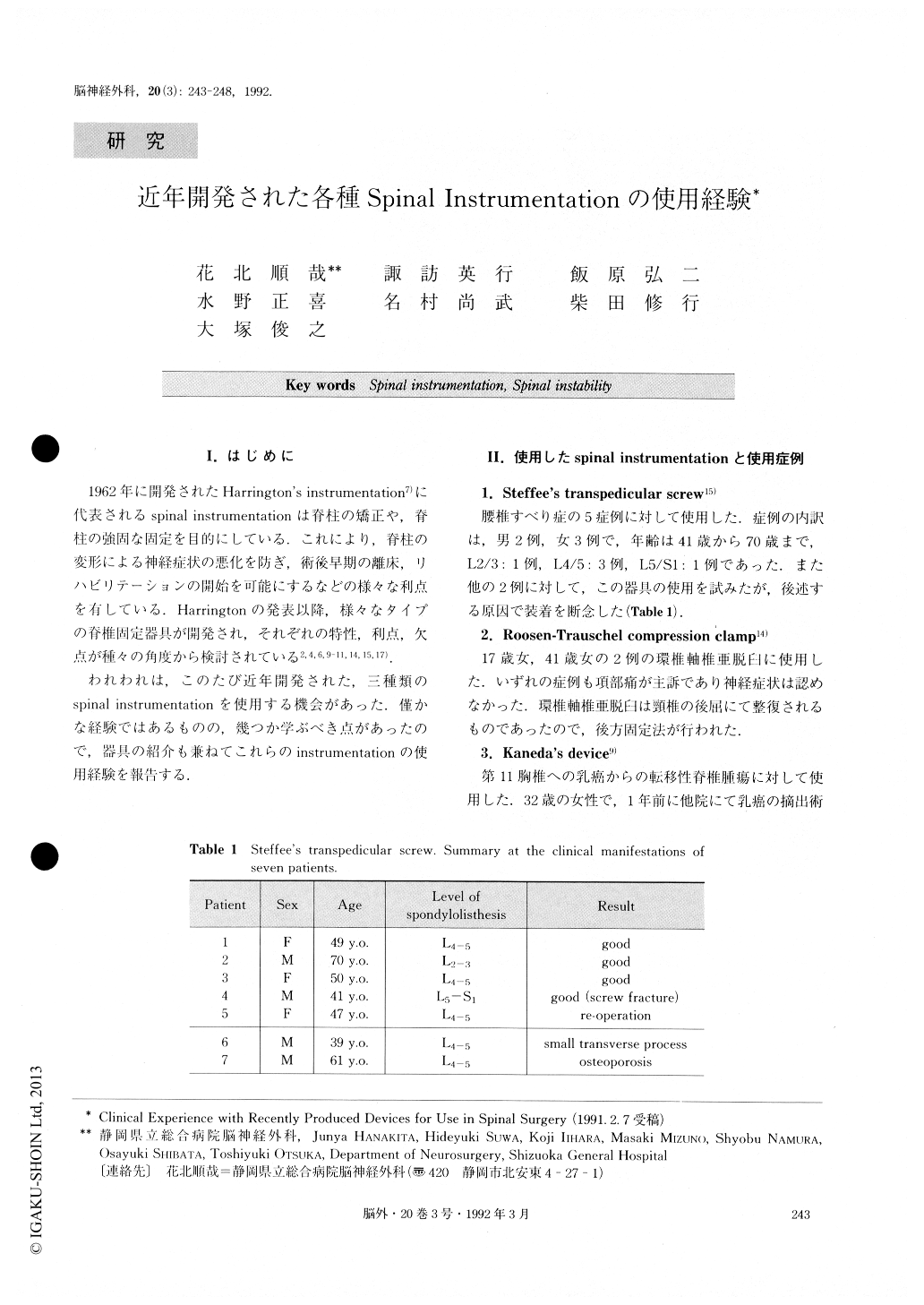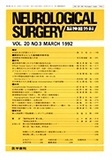Japanese
English
- 有料閲覧
- Abstract 文献概要
- 1ページ目 Look Inside
I.はじめに
1962年に開発されたHarrington's instrumentation7)に代表されるspinal instrumentationは脊柱の矯正や,脊柱の強固な固定を目的にしている.これにより,脊柱の変形による神経症状の悪化を防ぎ,術後早期の離床,リハビリテーションの開始を可能にするなどの様々な利点を有している.Harringtonの発表以降,様々なタイプの脊椎固定器具が開発され,それぞれの特性,利点,欠点が種々の角度から検討’されている2,4,6,9-11,14,15,17).
われわれは,このたび近年開発された,三種類のspinal instrumentationを使用する機会があった.僅かな経験ではあるものの,幾つか学ぶべき点があったので,器具の紹介も兼ねてこれらのinstrumentationの使用終験を報告する.
The authors reported their clinical experience with devices, which have been recently introduced for spinal surgery. The main roles of such devices are to correct malalignment of the spine and stabilize the spinal insta-bility. Although Harrington's device has been widely used since 1962, its use is gradually decreasing due to its having several weakpoints, such as its low resistence to distorting forces and its imperfect ability to correct malalignment of the spine. In the present manuscript, the authors describe clinical experience with three kinds of spinal devices. They are Steffee's transpedicu-lar screw for 5 cases of lumbar spondylolisthesis, Roosen-Trauschel compression clamp for 2 cases of atlanto-axial dislocation and Kaneda's device for one case of metastatic T-11 tumor. Good fixation was obtained in 4 cases using Steffee's devices. The injury of the nerve root is one of the most serious disadvan-tages in this device. Although Roosen-Trauschel com-pression clamp needs improvement in some aspect, it was able to bring about good stabilization without us-ing sublaminar wiring, which may be a dangerous proc-edure in the cervical region. Kaneda's device seemed to be useful for the thoracolumbar lesion. Although it needs a relatively radical approach, such as thoraco-tomy, Kaneda's device brought about good stabilization and corrected the kyphosis. The devices, which are de-scribed in the present manuscript, will probably play important roles in spinal surgery in the future.

Copyright © 1992, Igaku-Shoin Ltd. All rights reserved.


